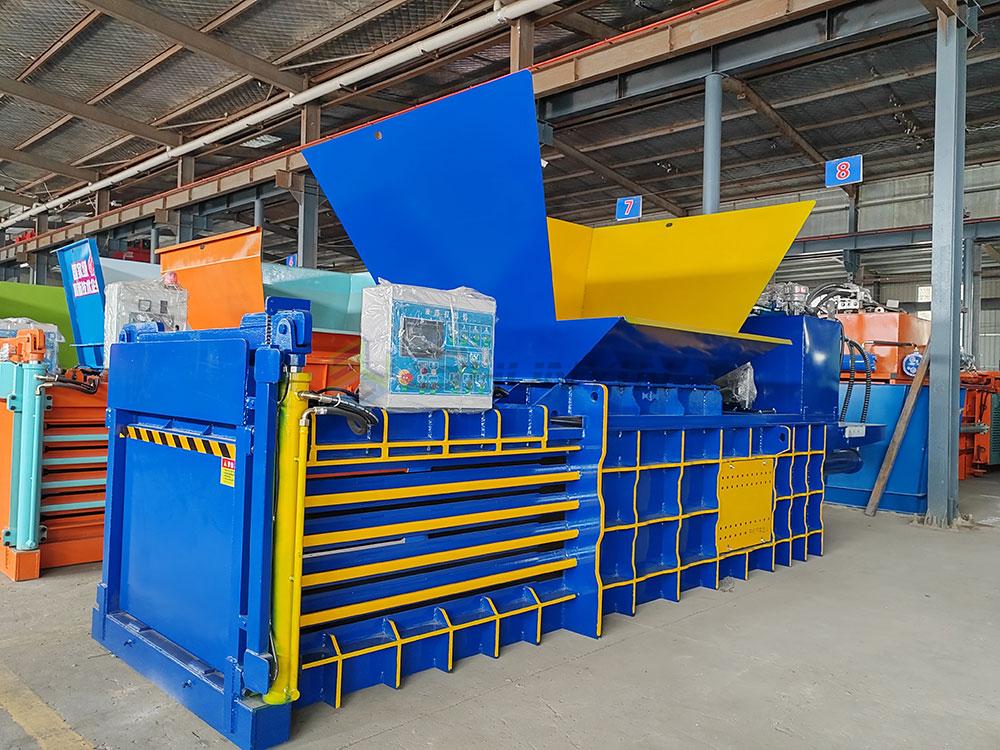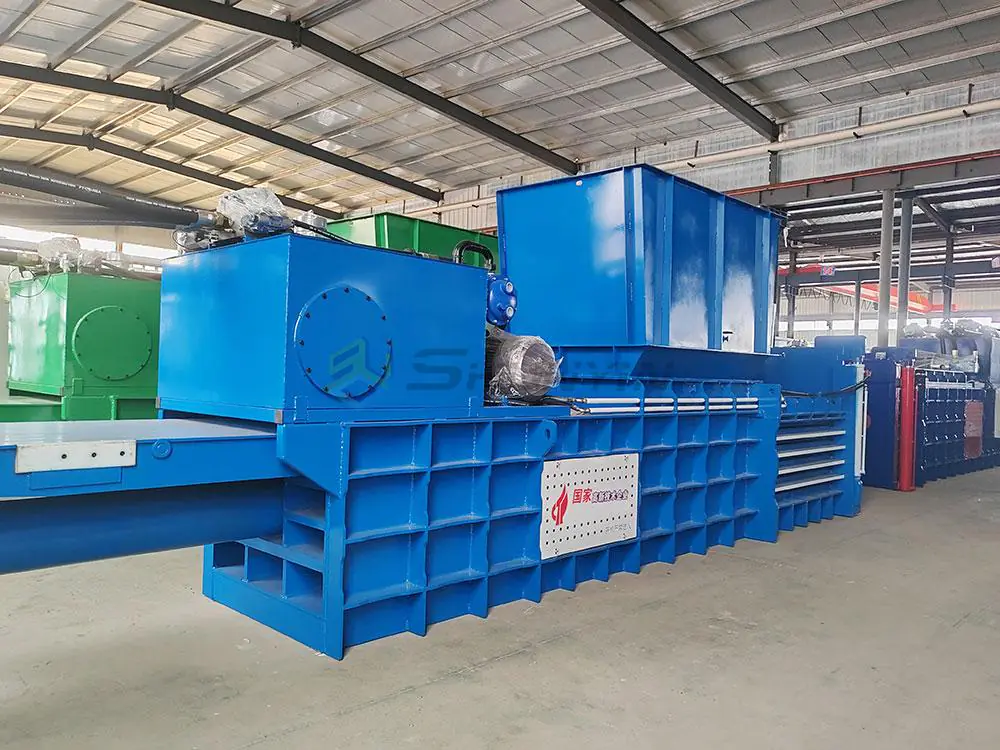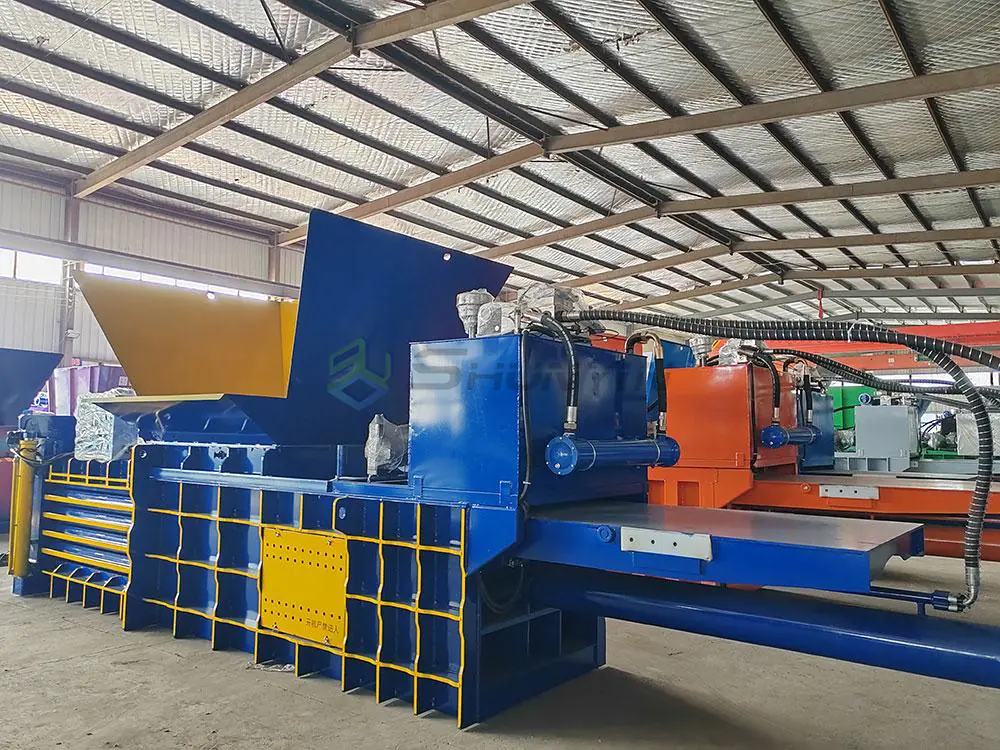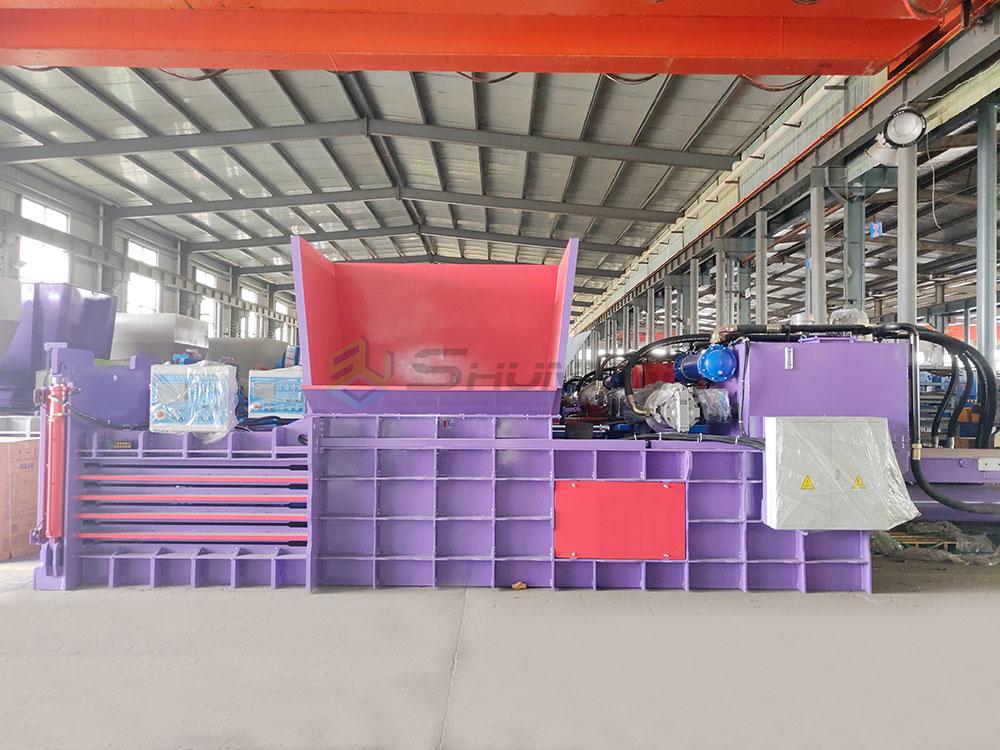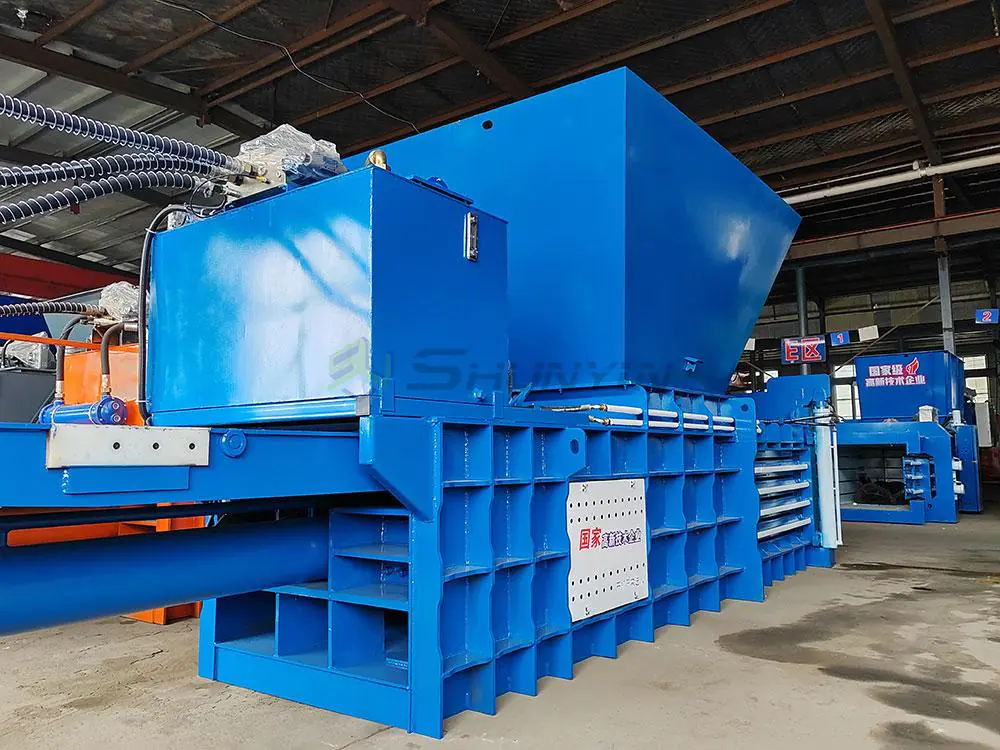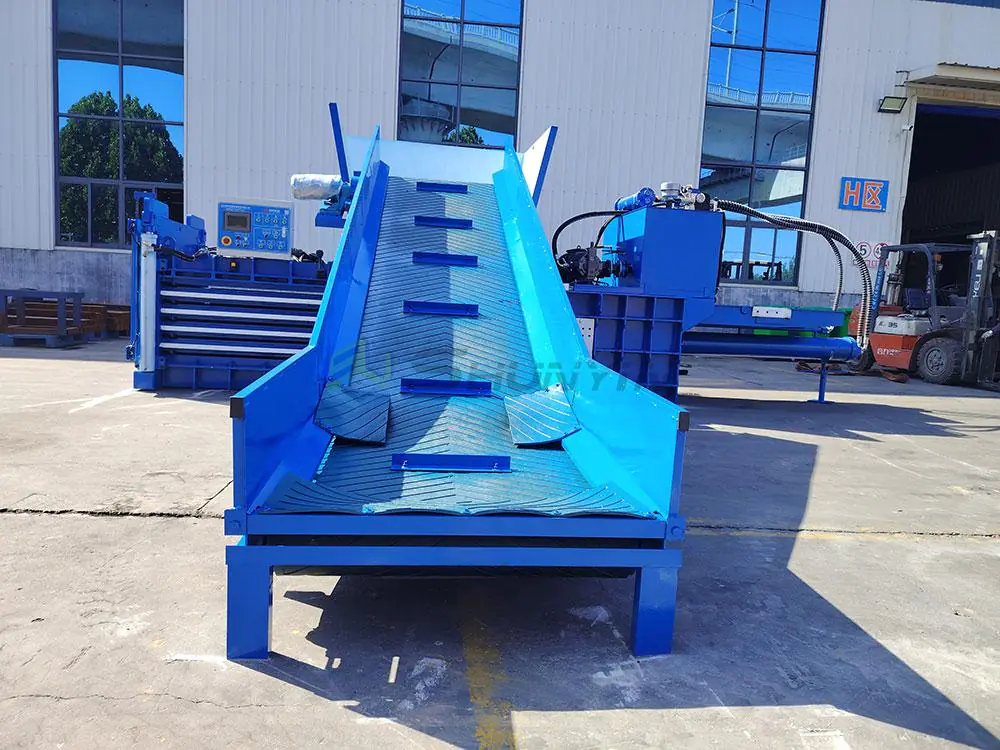Managing waste efficiently is a challenge many businesses face. Horizontal hydraulic balers offer effective solutions to streamline waste processing.
Horizontal hydraulic balers offer several key advantages:
- High Efficiency: They handle large volumes, improving operational efficiency.
- Versatility: Can process various materials like cardboard, plastic, and metals.
- Space Saving: Produce compact, easy-to-store bales.
- Labor Reduction: Automated features cut down on manual work.
- Durability: Built for long-term, reliable use.
- Consistent Bale Quality: Ensures uniform, high-density bales.
Let me explore how these balers can benefit your operations and improve overall productivity.
What Is the Difference Between a Vertical and Horizontal Baler?
Choosing the right type of baler is essential for meeting your waste management goals. Understanding the differences helps in making an informed decision.
A vertical baler compresses materials from top to bottom, typically used for small to medium-sized waste volumes. A horizontal baler compresses materials horizontally, offering higher capacity and efficiency, making it ideal for large-scale operations. Horizontal balers are often automated, while vertical balers are more manual and compact.
I’ve compared both types and found that each has unique benefits depending on your specific needs.
Design and Structure
Vertical Balers
- Footprint: Smaller, takes up less space.
- Operation: Compresses materials vertically.
- Best For: Small to medium-sized businesses with limited space.
Horizontal Balers
- Footprint: Larger, requires more floor space.
- Operation: Compresses materials horizontally.
- Best For: Large-scale operations like recycling centers and manufacturing plants.
Performance and Capacity
| Feature | Vertical Balers | Horizontal Balers |
|---|---|---|
| Compression Ratio | Lower | Higher |
| Bale Size | Smaller | Larger |
| Throughput | Moderate | High |
| Energy Consumption | Lower | Higher |
Cost Considerations
Horizontal balers generally have a higher initial cost but offer greater efficiency and capacity, providing better long-term value for large operations.
How Does a Horizontal Baler Work?
Understanding the operation of a horizontal baler helps in maximizing its benefits and ensuring smooth functionality.
A horizontal baler works by compressing waste materials like cardboard, plastic, or metal into compact bales. The material is fed into the machine’s chamber, where hydraulic pressure is applied to compress it. The baler then ties the bale with wire or plastic, ejecting the finished bale for storage or transport.
Here’s a step-by-step look at how these balers function.
Step-by-Step Operation
1. Material Feeding
Materials are loaded into the baler through a hopper, either manually or using automated feeders like conveyors.
2. Compression
Hydraulic rams apply pressure to compress the materials within the chamber, reducing their volume significantly.
3. Tying or Wrapping
Once compressed, the bale is tied with wire or wrapped with plastic to secure it for easy handling and transportation.
4. Bale Ejection
The completed bale is ejected from the chamber, ready for storage or transport.
Hydraulic System Functionality
The hydraulic system is the heart of a horizontal baler, providing the necessary force to compress materials effectively. It ensures consistent bale density and reliability in performance.
Maintenance Tips
Regular maintenance includes:
- Inspecting hydraulic lines for leaks.
- Checking the integrity of tie wires or wrapping materials.
- Lubricating moving parts to prevent wear and tear.
How Much Horsepower Do You Need to Pull a Baler?
Selecting the right horsepower ensures your baler operates efficiently without overloading your system. It’s a crucial factor in both performance and longevity.
The horsepower required to pull a baler typically ranges from 20 to 100 HP, depending on the baler size and type. Smaller balers need less power, while larger, more industrial balers require more horsepower to handle the material effectively.
I’ve found that matching horsepower to your specific needs can optimize baler performance and reduce operational costs.
Horsepower Requirements
Small to Medium Balers
- Horsepower Needed: 15-20 HP
- Suitable For: Light to moderate waste volumes, such as cardboard and light plastics.
Large Industrial Balers
- Horsepower Needed: 20-30 HP
- Suitable For: Heavy-duty applications, including mixed and dense materials like metals and large plastics.
Impact on Performance
Adequate horsepower ensures:
- Efficient compression without excessive strain on the machine.
- Consistent bale quality.
- Reduced maintenance costs due to less mechanical stress.
Selecting the Right Horsepower
Consider the following when selecting horsepower:
- Waste Volume: Higher volumes require more horsepower.
- Material Type: Denser materials need more force to compress.
- Operational Demands: High-frequency use may benefit from higher horsepower for durability.
What Is the Difference Between a Bailer and a Baler?
Distinguishing between a bailer and a baler is important for selecting the right equipment for your waste management needs.
A "baler" is a machine used to compress materials like cardboard, paper, or waste into compact bales for easier storage or transport. A "bailer," on the other hand, is a tool used in maritime contexts to remove water from boats. The two terms refer to different devices with distinct purposes.
I’ve observed that understanding these differences can significantly impact your efficiency and cost-effectiveness.
Functionality
Bailer
- Primary Use: Compressing smaller, specific types of waste.
- Materials Handled: Typically used for agricultural materials like hay or straw.
- Compression Rate: Lower compared to balers.
Baler
- Primary Use: Compressing a broad range of waste materials.
- Materials Handled: Suitable for cardboard, plastics, metals, and more.
- Compression Rate: Higher, resulting in more compact bales.
Applications
| Feature | Bailer | Baler |
|---|---|---|
| Material Range | Limited to specific types | Wide range including recyclables |
| Compression Rate | Lower | Higher |
| Best For | Agriculture, small-scale use | Industrial, large-scale use |
Cost and Efficiency
Balers generally offer better efficiency for large operations due to their higher compression rates and versatility, making them a more cost-effective choice in the long run.
Conclusion
Horizontal hydraulic balers provide significant advantages in efficiency, capacity, and versatility, making them ideal for large-scale waste management operations. Understanding their differences, operation, and power requirements ensures you select the right baler to enhance your business’s productivity and sustainability.







